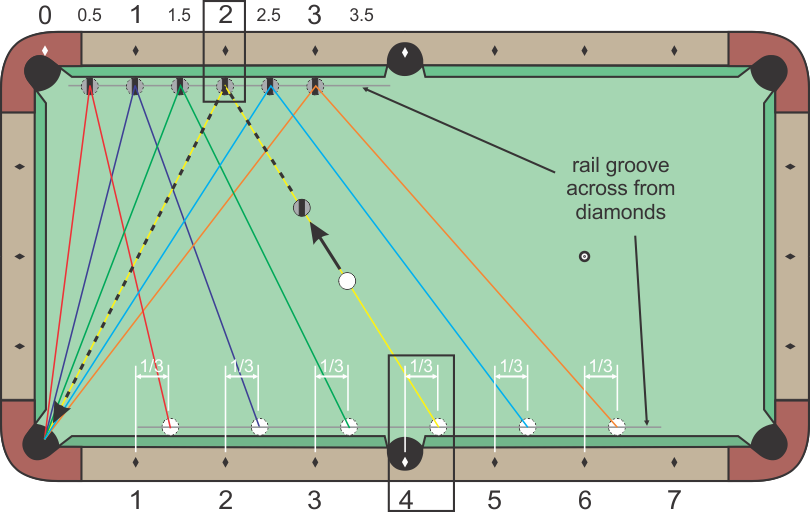... has anybody else tried out the
procedure in the video or the
two sets of shot in the handout on other Diamond tables with different labels and of different sizes? If so, please share what you found.
I was going to share the results, but I don't think they are good. IMO, the test has problems. 1) Its difficult to set up. 2) Its not repeatable. 3) Its hard to judge where the balls strike the rails if they go short/long and not in the heart of the pocket.
For 1) setup: I had tested all of the tables, and then I realized I had the CB in the wrong place on half of the test shots. So I went back and did it again. Then when I got home, I realized I still had it wrong. I'm an anal mf'r, and if I had so much trouble lining everything up, I would imagine many other people would.
For 2) I tried each shot I think 3 times (the room was closing and I was rushing to finish). (I still spend at least 30 min of everything.) The results across shots were not consistent. Sometimes they were, sometimes they were way off. I'd have to take more attempts to trust the results.
For 2 also), when I saw some one of my setup errors and later adjusted it and redid half the tests, some of the results were the same. Again, this shows inconsistencies in either the setup from shot trial to shot trial, or the reading with the eye of where the balls landed, or the stroke itself.
If I had more time, I might have set up the test tables with string for straight lines, and doughnuts for repeatability. But I only used tools most people would have, which is chalk cubes to mark the rails, a ruler, and my cue stick.
Simply too many inconsistencies to form any conclusion, and my data is not worth anything.
